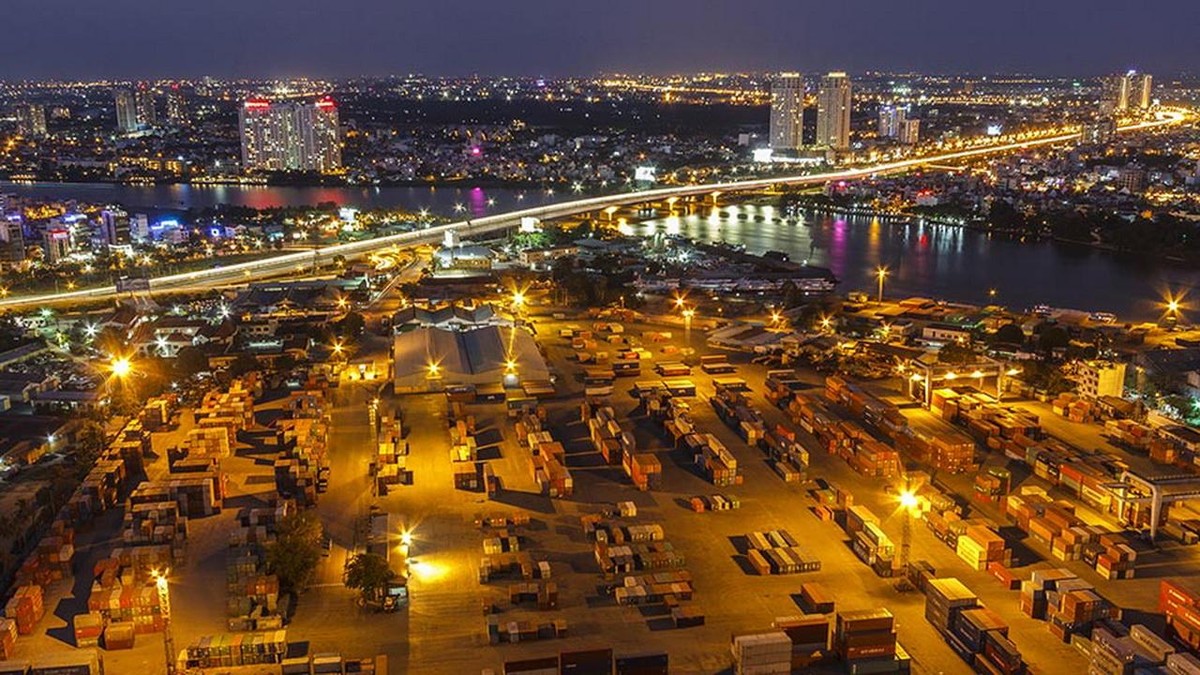Risks to the bright outlook are a renewed COVID-19 wave and a slower-than-expected global economic recovery.

A resurgence of the COVID-19 pandemic tightened labor markets, disrupted supply chains, and slowed growth in 2021. The economy is set for a strong rebound this year and next, made possible by a high vaccination rate that enabled disruptive containment measures to be dropped, trade expansion, and continued monetary and fiscal accommodation.
Risks to the bright outlook are a renewed COVID-19 wave and a slower-than-expected global economic recovery. A key policy challenge is ensuring the speedy and effective implementation of the economic recovery and development program to boost growth.
Economic performance
A renewed COVID-19 outbreak in April 2021 dampened Viet Nam’s economic recovery, tightened the labor supply, and disrupted labor-intensive manufacturing and production supply chains. GDP growth last year slowed to 2.6% from 2.9% in 2020.
The fast recovery of industrial output in the first quarter (Q1) and Q2 was erased by strict COVID-19. Supply-side contributions to growth.
Growth in 2021 was still well below its pre-pandemic trend. mobility restrictions in Q3, causing output to contract in that quarter. The easing of mobility restrictions in October on rising vaccination coverage restored growth, with output rising 4.0% overall in 2021.
Services growth slowed to 1.2% from 2.3% in 2020. A 96% drop in foreign tourist arrivals last year offset rebounding health and financial services in Q4. Agriculture grew by 2.9%, up from 2.7% in 2020, underpinned by revived food demand in the People’s Republic of China (PRC) and elsewhere.
Tourism remained moribund in 2021.
The labor market suffered severe shocks from both the supply and demand sides as the economy weakened and workers left the labor force, which fell by 2.0 million workers ages 15 and over in Q3 from the previous quarter. Private consumption grew by 2.0% last year, up from 0.6% in 2020 but much lower than 2019’s pre-pandemic growth of 7.4%.
Rising unemployment and falling incomes constrained private consumption growth last year.
Public consumption declined to 2.9% from 6.2% in 2020 as the government cut current expenditure. Total gross capital formation was unchanged at about 4.0%, but still half the pre-pandemic level. Registered foreign investment increased by 9.2%, but fragmented central and local coordination held back disbursements of foreign direct investment, which decreased by 1.2%.
External trade performed robustly despite COVID-19 headwinds.
Inflation decelerated to 1.8% in 2021 from 3.2% in 2020 on weak domestic demand; last year’s inflation rate was the lowest since 2016. With low inflation, the State Bank of Vietnam maintained its accommodative monetary policy, keeping record-low policy rates unchanged since October 2020, providing credit relief measures, and increasing credit growth limits for some commercial banks. Interest rate reductions and waivers totaled an estimated $1.5 billion. Revived economic activity since October 2021 restored high credit growth in the last months of the year, bringing full-year credit growth to an estimated 13.6%, up from 12.2% in 2020. Money supply growth is estimated at 10.7% at the end of 2021, down from 14.5% in 2020.
Merchandise trade exports rose to 19% in 2021 from 7% in 2020. Shipments of mobile phones, computers and electronics, accounting for 32% of total exports, rose by 13.2%. The United States remained Viet Nam’s biggest export market with a 28.4% share of the total value of exports, followed by the PRC. The PRC’s zero-tolerance approach to the COVID-19 pandemic hindered exports to the PRC last year and in the first 2 months of 2022. The merchandise trade surplus shrank to 4.9% of GDP from a record-high surplus of 8.9% in 2020.